
Headrests
Art of South Africa's Rural Communities
Historically, headrests were used by both men and women throughout Southeast Africa, but there is no significant evidence of the adoption of carved headrests among the Xhosa-speaking communities in the present-day Eastern Cape region.
Once access to metal tools became widely available, carvers developed a bewildering variety of headrests styles that today can be classified regionally.
In some cases, the work of individual artists has been identified, particularly among Zulu-speaking communities living to the south of the Thukela River in present-day KwaZulu-Natal.
By
Professor Sandra Klopper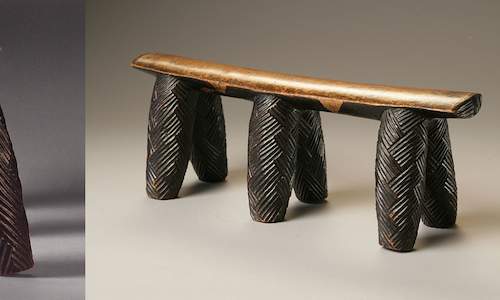
Some of the headrests collected in the Colony of Natal before the 20th century have bulbous legs that some rural owners referred to as amaso...
more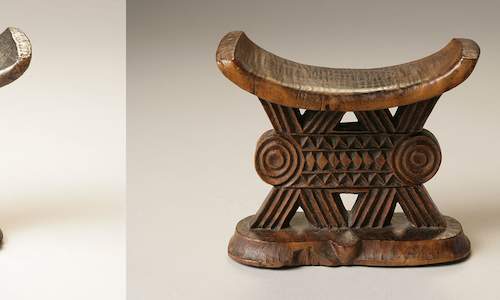
Many Shona and Tsonga headrests use a cross-shape in their supports, but some Tsonga carvers produced exceptionally fine, innovative example...
more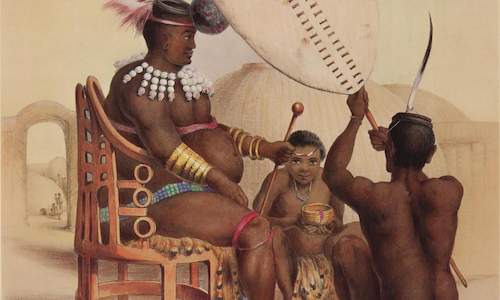
From the very earliest days of European settlement on the Natal coast, the headrests used by Zulu-speaking communities fascinated colonial o...
more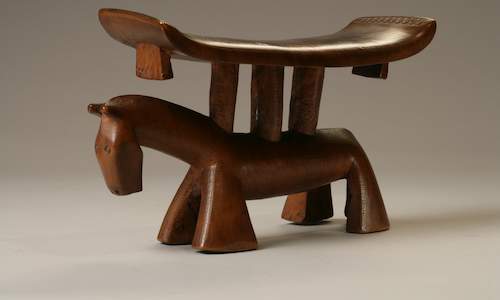
When Muller and Snelleman travelled through parts of southern Africa in the early 1890s, they recorded the wide variety of headrest styles a...
more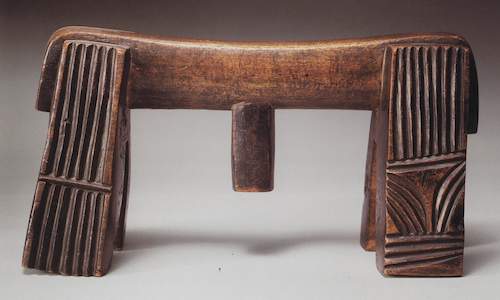
The amasumpa - raised 'warts' or bumps - pattern on these two examples originated in the Zulu Kingdom in the nineteenth century where the mo...
more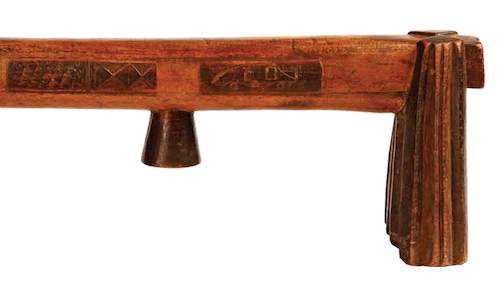
As early as the 1940s, some headrest carvers used motifs signalling the changing realities of modes of transport, such as cars and busses....
more
 Some of the headrests collected in the Colony of Natal before the 20th century have bulbous legs that some rural owners referred to as amaso...
Some of the headrests collected in the Colony of Natal before the 20th century have bulbous legs that some rural owners referred to as amaso... Many Shona and Tsonga headrests use a cross-shape in their supports, but some Tsonga carvers produced exceptionally fine, innovative example...
Many Shona and Tsonga headrests use a cross-shape in their supports, but some Tsonga carvers produced exceptionally fine, innovative example... From the very earliest days of European settlement on the Natal coast, the headrests used by Zulu-speaking communities fascinated colonial o...
From the very earliest days of European settlement on the Natal coast, the headrests used by Zulu-speaking communities fascinated colonial o... When Muller and Snelleman travelled through parts of southern Africa in the early 1890s, they recorded the wide variety of headrest styles a...
When Muller and Snelleman travelled through parts of southern Africa in the early 1890s, they recorded the wide variety of headrest styles a... The amasumpa - raised 'warts' or bumps - pattern on these two examples originated in the Zulu Kingdom in the nineteenth century where the mo...
The amasumpa - raised 'warts' or bumps - pattern on these two examples originated in the Zulu Kingdom in the nineteenth century where the mo... As early as the 1940s, some headrest carvers used motifs signalling the changing realities of modes of transport, such as cars and busses....
As early as the 1940s, some headrest carvers used motifs signalling the changing realities of modes of transport, such as cars and busses....